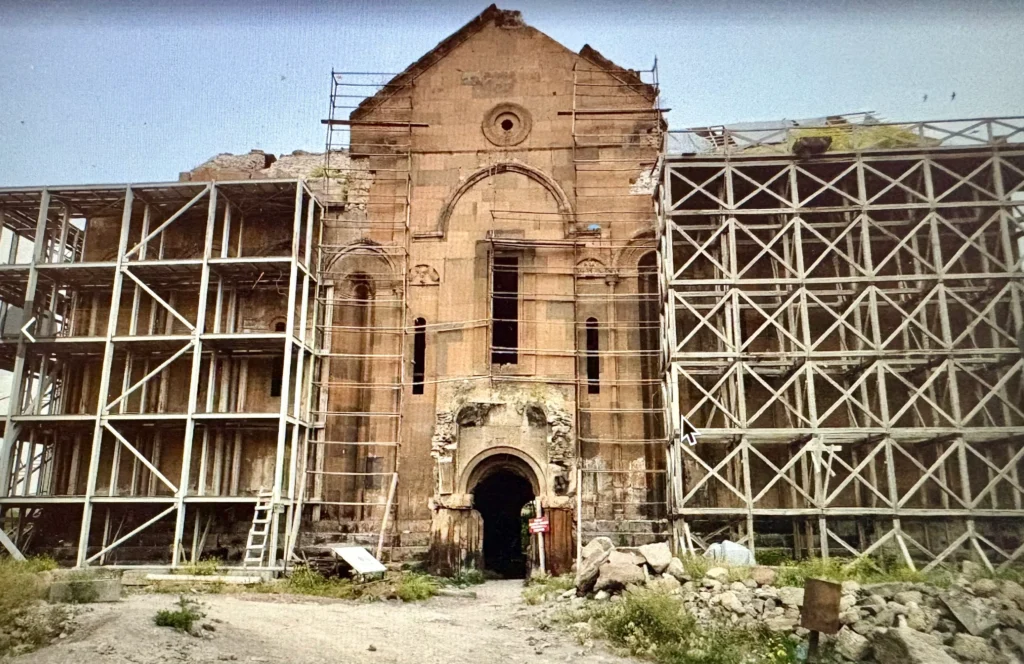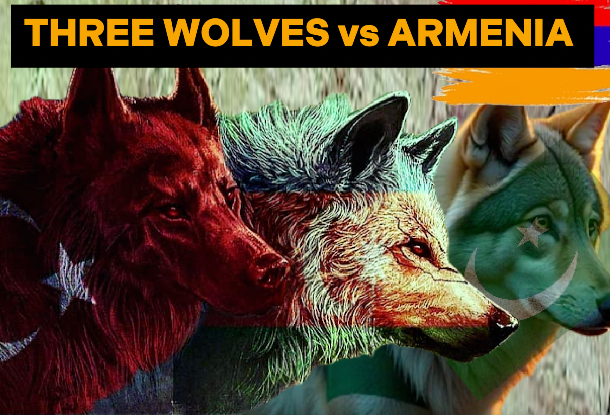Recent tensions in the South Caucasus are directly linked to a well-defined pan-Turkism strategy which includes Turkey, Azerbaijan and Pakistan. Turkey is striving to expand its sphere of influence eastward towards the Caspian Sea and subsequently into Central Asia. The ceasefire between Armenia and Azerbaijan, mediated by Moscow in November 2020, stipulates the establishment of a corridor under Russian control through Armenia’s southern Syunik Province. This corridor, referred to by Baku as the Zangezur Corridor, is intended to link the two regions of Azerbaijan and, ultimately, to Ankara. The presence of Russian oversight would prohibit Turkey from optimising its military logistics to Central Asia through this route, thereby hindering its efforts to supplant Russian influence in the area. The Battle for the Caucasus is set to be a historical and geopolitical clash. The people of Armenia fear that Prime Minister Nikol Pashinyan intends to transform the nation into an “Indian reservation” by erasing all cultural and social foundations to facilitate a NATO, Turkish-led expansion (land-grab) in the South Caucasus and beyond, which aligns perfectly with the EU strategy for the region.
VIDEO: Azerbaijan, Turkey & Armenia: A New Coalition Against Russia? (Source: Syriana Analysis)<
.
Ilham Aliyev, the President of Azerbaijan, believes his nation is destined for a more promising future within a Turkish-led regional framework, rather than further solidifying its relationships with Russia and Iran. Azerbaijan and Turkey are united by a profound sentiment of “one nation, two states,” which is deeply rooted in their common Turkic heritage and linguistic ties. “The Greater Turkey” project aims to establish itself as a great power in Eurasia, with backing from Pakistan and Azerbaijan. The pack of wolves appear ready to implement each phase of their Triple Pan-Turkist agenda, which involves religious, cultural and memorial erasure, specifically through the revision of Caucasian history by eliminating Armenian heritage and undermining the legitimacy of the Armenian presence in their historical territories.
Armenia is a sacred land and the first Christian nation in the world, which once more faces great danger, with an enemy, not just at the gate, but already inside, working on renewing the nation’s constitution whilst devising new ways to destroy the Armenian Apostolic Holy Church…

IMAGE: Prime Minister Shehbaz Sharif of Pakistan, Türkiye’s President Recep Tayyip Erdoğan, and President Ilham Aliyev of Azerbaijan (Source: AA)
(Article translated from French to English – DeepL Translate)
Between Ani and Shushi: Heritage as a Weapon. Cultural Erasure and Memory Negation: The Triple Pan-Turkist Offensive
Among the many alarming signals currently being experienced in the Caucasus, three recent events (little, if any, commented on in Western Europe) deserve to be analysed together. They outline a broader strategy of rewriting history, manipulating memory, and symbolic unification around a neo-imperial project: that of pan-Turkism, now affirmed as a regional doctrine by Azerbaijan, Turkey, and Pakistan.
The controversial Restoration of the Ani site: Cultural Erasure Disguised as Preservation
The archaeological site of Ani, a UNESCO World Heritage Site, is a major symbol of medieval Armenian civilisation. Located on present-day Turkish territory, this ancient capital of the Bagratid Kingdom was for a long time a jewel of Eastern Christian architecture. However, the ongoing “restoration” of the Armenian Cathedral of Ani by the Turkish authorities [1], carried out by deliberately excluding Armenian experts despite the involvement of international organisations such as the World Monuments Fund, can only arouse indignation. Paradoxically, these same institutions continue to use the name “Ani Cathedral [2] ” in their official communications even though the monument will be reopened under the name “Fethiye Mosque”.
The restorations of the Ani site have been the subject of recurring criticism from specialists, who have denounced past interventions as a distortion of the original structures and the addition of anachronistic materials. The current “restoration” of the cathedral is part of a tourist staging that systematically removes the Armenian roots of the site. This process can only be interpreted as a deliberate erasure of the Armenian dimension of the site, in the continuity of a policy of cultural denial. Let us recall here that one of the apostles of dialogue, reconciliation and the valorisation of the different cultures of Turkey, including in Ani [3], the patron Osman Kavala, founder of Anadolu Kültür, has been languishing in prison since 2017 and was unjustly sentenced to life imprisonment in 2022.

IMAGE: “Restoration” of the Armenian Cathedral of Ani into the “Mosque of Conquest” (2025)
While the reconversion of Hagia Sophia into a mosque has sparked a heated international controversy, the near-total indifference surrounding the “restoration” of Ani Cathedral, which will be reopened as the Fethiye Mosque (Mosque of the “Conquest”), is all the more shocking. It is time for UNESCO to take responsibility. At the very least, the removal of Ani from the World Heritage List should be considered until an independent and contradictory assessment of the work is carried out, in accordance with international heritage standards.
A border post named after a genocide perpetrator? Ankara’s double talk on “normalisation”
On June 21, 2025, the chairman of the Iyi (Good Party), a nationalist party founded by a former member of the far-right MHP (Nationalist Action Party), tabled a bill to rename the Alican border crossing on the Armenian-Turkish border after Talaat Pasha [4], one of the main architects of the 1915 Armenian Genocide. The bill was signed by 28 MPs.
This project has sparked intense outrage among some human rights defenders and non-governmental organisations. The Zoryan Institute, renowned for its work on genocides and Armenian memory, published an open letter urging the Turkish authorities to withdraw this initiative, which is incompatible with any sincere desire for reconciliation. The Institute points out that naming an international crossing point after one of the organisers of the Armenian Genocide amounts to mocking the victims and undermining any attempt at dialogue.
In the same letter, the Institute proposes a powerful act of symbolic reparation: renaming the border crossing in tribute to Hrant Dink, an Armenian-Turkish journalist and leading figure in dialogue who was assassinated in Istanbul in 2007 for daring to speak out about the Armenian Genocide and for working for a more inclusive Turkish society. This gesture, both modest and powerful, would constitute a real and credible signal of openness.
The mere submission of this proposal, even if it has not yet been adopted, demonstrates political doublespeak. It undermines the credibility of any prospect of Armenian-Turkish normalisation and reveals how the memory of the genocide remains instrumentalised for identity purposes by certain circles of power. The international community, particularly the states that have recognised the Armenian genocide, must react; otherwise, this type of provocation will only entrench the state’s negationist policy in Turkey and strengthen ultranationalist currents in the region. It should be recalled that in June 2025, the mayor of Ankara had already inaugurated a memorial dedicated to the memory of Talaat Pasha in the Turkish capital [5].
Nagorno-Karabakh, the scene of a pan-Turkic summit: the Triple Alliance is consolidated on ruins
On July 4, 2025, Turkish President Recep Tayyip Erdoğan visited Nagorno-Karabakh again for a summit of the Economic Cooperation Organisation. This summit was held in Stepanakert, the former capital of Nagorno-Karabakh, now emptied of its ancestral Armenian population following the Azerbaijani military offensive of September 2023, which itself followed an inhumane and illegal land and air blockade lasting nearly 10 months and a 44-day war in 2020. Alongside President Ilham Aliyev and Pakistani Prime Minister Shahbaz Sharif, Erdoğan proclaimed that his country, Azerbaijan, and Pakistan were now:
“Three states, one nation.”
The pro-government newspaper that reported the story illustrates it with a photo of three wolves, likely representing the three states in question. These three wolves are also the symbol of the Grey Wolves, a Turkish ultranationalist militia officially banned in France.
The imagery portrayed is clear: power, purity, homogeneity. But what is less said is that it is a victory over a civilian population driven from its ancestral lands (like “dogs [6] “) and that this demonstration of force comes to legitimise ethnic cleansing. As in eastern Turkey, the Armenian churches of Nagorno-Karabakh are denatured or destroyed [7].
Through this Turkey-Azerbaijan-Pakistan alliance, a logic of regional lockdown is emerging that marginalises Armenia, denies its history, and attempts to erase all traces of its heritage in order to delegitimise the very existence of the Republic of Armenia, which Azerbaijan claims is in fact “Western Azerbaijan.” The consolidation of this military, economic, and ideological alliance, on the very soil of Nagorno-Karabakh, constitutes a major provocation for the Armenians and a snub to the values of international law.
Conclusion: a strategy of erasure with lasting consequences
From Ani to Shushi, passing through the Armenian-Turkish border, these three events reveal a coherent pan-Turkist strategy of cultural and memorial erasure. These are not isolated initiatives, but rather a coordinated state project that aims to rewrite the history of the Caucasus by erasing Armenian heritage and delegitimising the Armenian presence in its ancestral lands.
Impunity as fuel. International silence in the face of these provocations only encourages this dynamic. The French example is symptomatic: after condemning the ethnic cleansing of Nagorno-Karabakh, Paris sent its ambassador to Shushi, de facto legitimising ethnic cleansing [8]. This contradiction between declarations and diplomatic actions undermines the credibility of the discourse on human rights.
The urgency of a coordinated response. Faced with this offence, three levers must be activated simultaneously:
Internationally, States that have recognised the Armenian Genocide must strongly condemn the plan to rename a border crossing after Talaat Pasha. UNESCO must conduct an independent investigation into the restoration of Ani and consider suspending its heritage status if the manipulations are confirmed.
On the Armenian front: The government must intensify its strategic partnerships with France, India, and other powers to methodically denounce this pan-Turkist logic. But above all, it must avoid two fatal pitfalls: stifling internal critical voices and loosening ties with the diaspora, Ankara’s avowed strategic objective.
On the diasporic level: As Hyestart has already written, the Armenian diaspora must reorganise itself internationally in the face of the current upheavals and strengthen its capacity for international political mobilisation.
A fight for the future. Beyond Armenia, the architecture of international law is being called into question. The “triple pan-Turkist offensive” is testing the international community’s resilience in the face of the planned erasure of a people. The response to this test will determine whether memory can still stand as a barrier to impunity, or whether we are witnessing the emergence of a new paradigm, where mights prevail over law.
Democratic plurality and transnational solidarity remain the true forces of resistance against this erasure. They constitute the last bulwarks against a rewriting of history that remains unspoken.
See more analysis from HYESTART
READ MORE ARMENIA NEWS AT: 21st CENTURY WIRE ARMENIA FILES
SUPPORT OUR INDEPENDENT MEDIA PLATFORM – BECOME A MEMBER @21WIRE.TV
VISIT OUR TELEGRAM CHANNEL
Click this link for the original source of this article.
Author: Global Affairs
This content is courtesy of, and owned and copyrighted by, https://21stcenturywire.com and its author. This content is made available by use of the public RSS feed offered by the host site and is used for educational purposes only. If you are the author or represent the host site and would like this content removed now and in the future, please contact USSANews.com using the email address in the Contact page found in the website menu.








